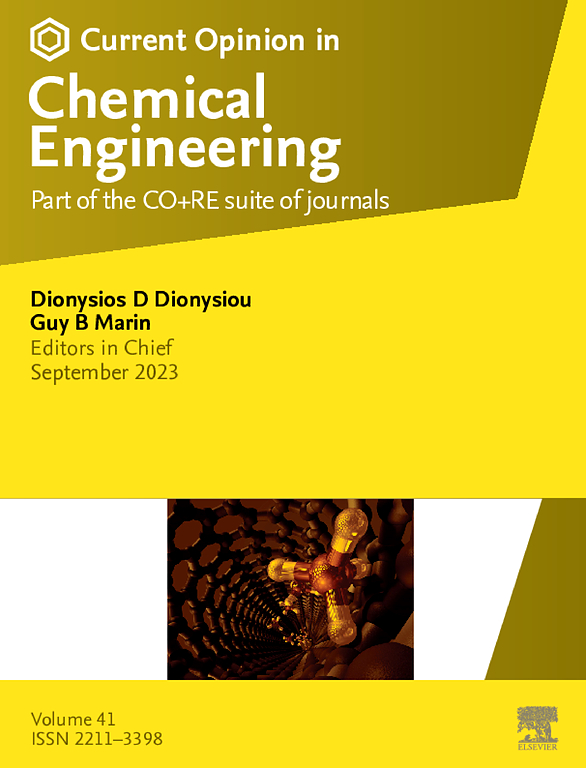Ferroelectric BiFeO3 and BaTiO3 photocatalysts for photoelectrochemical water splitting
IF 6.8
2区 工程技术
Q1 BIOTECHNOLOGY & APPLIED MICROBIOLOGY
引用次数: 0
Abstract
Photocatalytic water splitting offers a sustainable route for hydrogen production but is often hindered by rapid charge carrier recombination and slow kinetics. Traditional strategies to enhance charge separation include solid–solid junctions, facet engineering, and cocatalyst addition. This review explores an alternative approach using ferroelectric materials to improve photoelectrochemical (PEC) water splitting efficiency. Ferroelectric materials exhibit spontaneous electric polarization, generating internal electric fields that modulate band bending at the solid–liquid interface. This intrinsic property enhances charge carrier separation and directs photogenerated electrons and holes toward specific redox sites or cocatalysts. We highlight key studies demonstrating the effectiveness of ferroelectric materials in PEC applications. Electric polarization of BiFeO3 thin films resulted in controlled enhancement of water oxidation by directly influencing band bending and charge transfer processes. Similarly, BaTiO3–TiO2 core–shell structures with Ni(OH)₂ cocatalysts exhibited improved PEC activity through polarization-mediated charge separation. BaTiO3 particles also demonstrated enhanced PEC water oxidation and hydrogen evolution in both film and suspension systems due to ferroelectric effects. These findings underscore the potential of ferroelectric materials to optimize charge carrier dynamics in photocatalytic processes for better solar energy conversion.
用于光电化学水分解的铁电BiFeO3和BaTiO3光催化剂
光催化水分解为制氢提供了一条可持续的途径,但往往受到快速载流子重组和缓慢动力学的阻碍。提高电荷分离的传统策略包括固-固结、面工程和助催化剂添加。本文综述了利用铁电材料提高光电化学(PEC)水分解效率的替代方法。铁电材料表现出自发电极化,产生内部电场,调制固液界面处的能带弯曲。这种固有特性增强了载流子的分离,并将光生成的电子和空穴导向特定的氧化还原位点或助催化剂。我们重点介绍了证明铁电材料在PEC应用中的有效性的关键研究。BiFeO3薄膜的电极化通过直接影响能带弯曲和电荷转移过程,实现了水氧化的可控增强。同样,带有Ni(OH) 2助催化剂的BaTiO3-TiO2核壳结构通过极化介导的电荷分离表现出更好的PEC活性。由于铁电效应,BaTiO3颗粒在膜和悬浮体系中也表现出增强的PEC水氧化和析氢。这些发现强调了铁电材料在光催化过程中优化载流子动力学以实现更好的太阳能转换的潜力。
本文章由计算机程序翻译,如有差异,请以英文原文为准。
求助全文
约1分钟内获得全文
求助全文
来源期刊

Current Opinion in Chemical Engineering
BIOTECHNOLOGY & APPLIED MICROBIOLOGYENGINE-ENGINEERING, CHEMICAL
CiteScore
12.80
自引率
3.00%
发文量
114
期刊介绍:
Current Opinion in Chemical Engineering is devoted to bringing forth short and focused review articles written by experts on current advances in different areas of chemical engineering. Only invited review articles will be published.
The goals of each review article in Current Opinion in Chemical Engineering are:
1. To acquaint the reader/researcher with the most important recent papers in the given topic.
2. To provide the reader with the views/opinions of the expert in each topic.
The reviews are short (about 2500 words or 5-10 printed pages with figures) and serve as an invaluable source of information for researchers, teachers, professionals and students. The reviews also aim to stimulate exchange of ideas among experts.
Themed sections:
Each review will focus on particular aspects of one of the following themed sections of chemical engineering:
1. Nanotechnology
2. Energy and environmental engineering
3. Biotechnology and bioprocess engineering
4. Biological engineering (covering tissue engineering, regenerative medicine, drug delivery)
5. Separation engineering (covering membrane technologies, adsorbents, desalination, distillation etc.)
6. Materials engineering (covering biomaterials, inorganic especially ceramic materials, nanostructured materials).
7. Process systems engineering
8. Reaction engineering and catalysis.
 求助内容:
求助内容: 应助结果提醒方式:
应助结果提醒方式:


